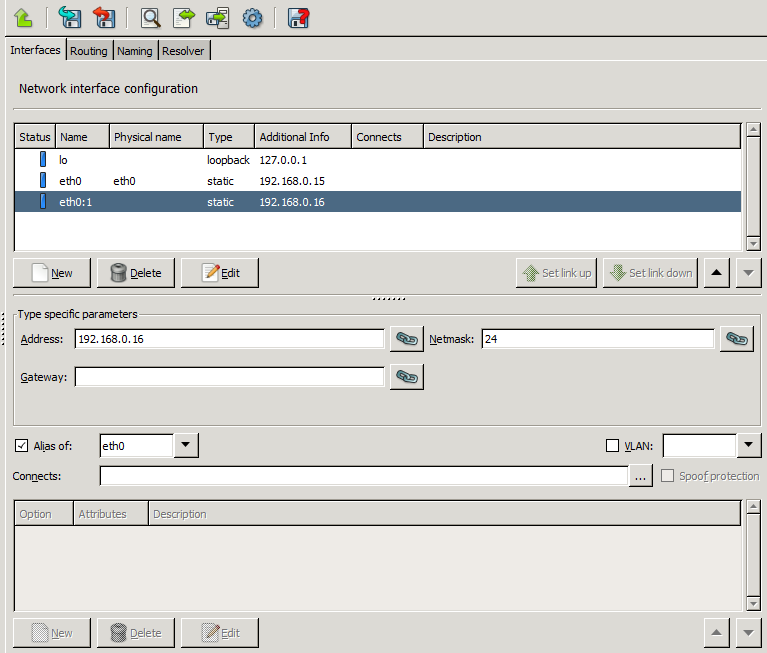In some cases it can be useful to fine-tune the network for special purposes. For example for Virtual Local Area Network (VLAN) technology: many organizations use it for security and network traffic separation purposes. VLANs are logically separated components of physical networks. Logical separation means that although they are on the same physical network (otherwise known as broadcast domain) hosts on separate VLANs cannot communicate with each other unless a router is set up that provides the interconnection. Routing functions for VLAN, and VLAN creation in general, are typically performed by Layer 3 Ethernet switches. Provided that VLAN-capable network cards are installed in the machine, Zorp fully supports VLANs and ZMS provides a control for configuring it.
VLAN interfaces are named in the following manner:
ethx.n where
- x
is the number of the physical interface
- n
is the ID of the VLAN. The ID of the VLAN is usually a number (for example,
0for the first VLAN of the interface,1for the second, and so on).
| Note |
|---|
|
If an interface is defined as a VLAN interface, it cannot operate as a real, physical interface at the same time. For example, the |
Using alias interfaces allows to configure multiple IP addresses to a physical device. Alias interfaces are named in the following manner:
ethx:n where
- ethx
is the name of the corresponding physical or VLAN interface.
- n
is the ID of the alias interface. The ID is usually a number (for example,
0for the first alias of the interface,1for the second, and so on), but it can be a more informative name as well.
An alias can be defined for existing physical and VLAN interfaces.
Published on May 30, 2024
© BalaSys IT Ltd.
Send your comments to support@balasys.hu



